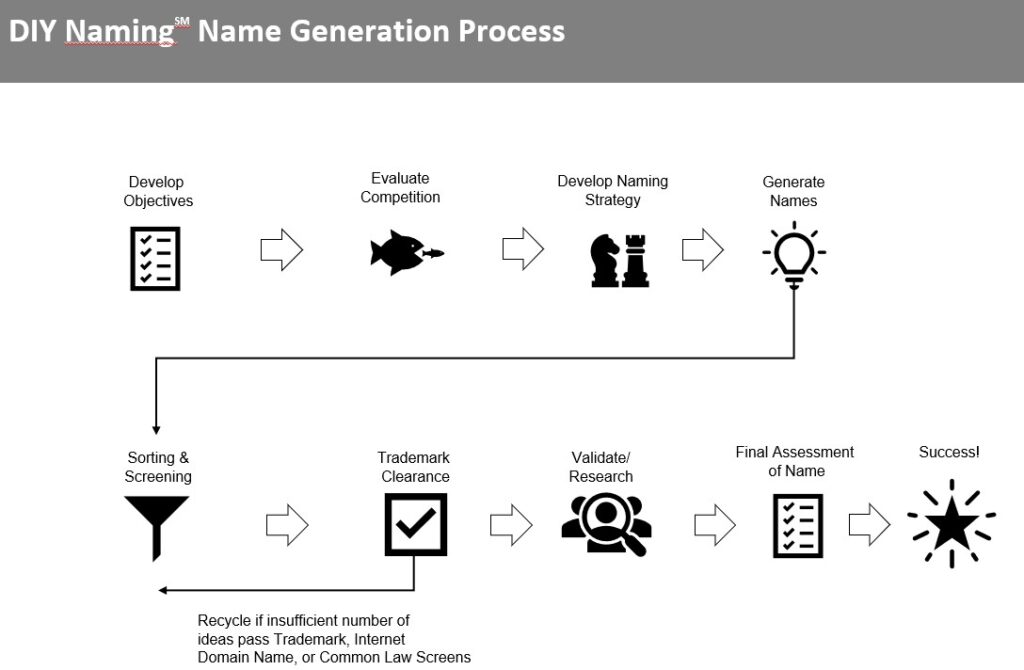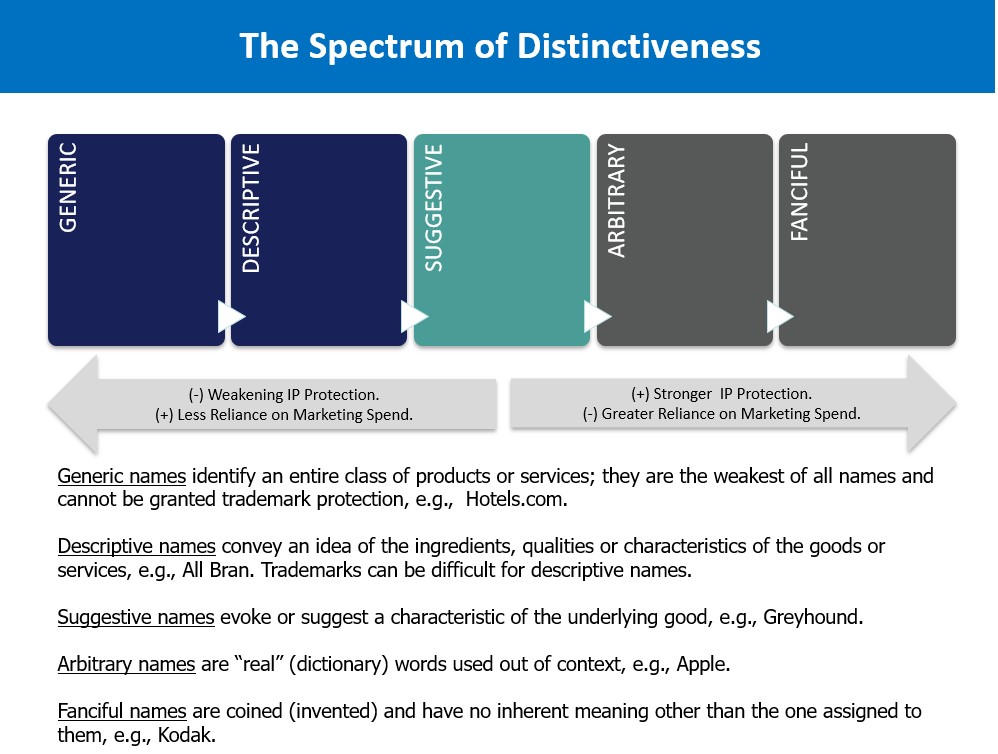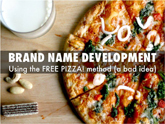How to Name Your Startup in 8 Simple Steps

This article provides a process you can use to name your business, product, or service. There are 8 simple steps and if you do the work that is required, you can develop a great name very quickly.
FULL DISCLOSURE: I am a professional name developer with 25+ years of experience in branding and marketing. Companies pay me a significant amount of money to develop names for them. I also wrote a book titled DIY Naming (https://payhip.com/b/lzPH8) that expands on the process in this article. But you don’t have to hire me or buy my book if you would rather “Do-It-Yourself!” So let’s get started!
Step 1: Develop Objectives
Most people who start a business have a single-minded objective for naming => Develop A Great Name. But what does that mean? The reason you develop naming objectives before you start to brainstorm is to decide what you want the name to do for you and to provide criteria for evaluating names.
When developing the objectives for your naming project, you should consider the following questions:
- What does the future look like and what role will your company play in it?
- What is the current and future competitive set and how do you want to differentiate from the competition?
- How do you want your customer to feel after hearing/reading your name?
- What are the unique attributes of your company/product/service and how do you want your name to reflect that uniqueness?
- How will your business expand in the future and how can your name flex to fit that future?
- Can your name project a certain image or personality?
- How will I know when I have identified a great name?
One tool I use to evaluate names is The Name Evaluation Tool, a simple 10-Step Checklist to evaluate a name. It will quickly give you an idea of the strengths or weaknesses of your names. It will also tell you where your names are lacking, so you can go back to the drawing board. I have found this tool to be very helpful in setting up objectives for a naming project.
Your naming objectives might be as simple as: “We have a groundbreaking product that will revolutionize the ABC industry, so we want a name that stands apart from the competition and evokes the future that we imagine. The name must be easy to pronounce, read and spell, and be memorable. Most importantly, the name must convey the benefits that our product delivers and must give our target customers the belief that we are the new market leader.”
But wait! Don’t write down your objectives in ink just yet. Do the next step to help you understand how to stand out versus the competition.
Step 2: Evaluate Competition
Here is a visual way to demonstrate why the competitive set is so important to consider. In the three groups of circles shown below, the circle in the center is always the same size. However, as you can see, the center circle looks smaller or larger based upon the size of the other circles surrounding it. The group of circles on the right has six similarly sized circles, and you can see how it is impossible to distinguish one from another. It is far better to be the outlier, such as the center circle in the first two groups of circles.

Don’t be like the group of circles on the right. Make sure you develop a name that ensures you will stand out versus the competition!
One way to do that is to consider the type of name you wish to develop. Start by listing all the companies that you consider to be competitors. You should have a list of at least 8–10 companies. And please don’t say “I have no competition.” Everyone has competition. If you think about your company’s product or service and think of possible substitutions for them (even if you consider them to be inferior), then you will easily generate names of competitors. If you are in doubt, visit Amazon or Google and enter your product into the search bar. You will find your competitors.
The next step is to assess the names of the competitors and place them into the spectrum as shown below.

Once you understand where your competitors are, you can formulate your own strategy for standing out. For example, if the competitive set for your food chopping device consists of products with descriptive names like EZ Chop, Speed Chop, QuickChop, or TurboChop, don’t call your product FastChop because you will get lost in the field of sameness at the shelf. In this case, you should avoid descriptive names altogether.
In the example I provided earlier, you might want to modify the objective to mandate development of a fanciful name as those are often considered to be cutting edge or high tech. The revised Naming Objectives might be: “We have a groundbreaking product that will revolutionize the ABC industry, so we want a fanciful or invented name that stands apart from the competition and evokes the future that we imagine. The name must be easy to pronounce, read and spell, and be memorable. Most importantly, the name must convey the benefits that our product delivers and must give our target customers the belief that we are the new market leader.”
Step 3: Naming Strategy
Never start a name development project without a solid strategy. You need to have a strategic positioning that provides a solid foundation for your branding and marketing efforts. The entire marketing strategy can be summarized in one statement that is called a Brand Positioning Statement.
There are five components to a positioning statement:
- Target Audience — A demographic and attitudinal description of the core prospect to whom the brand is intended to appeal.
- Frame of Reference — The category in which the brand competes.
- Point of Difference — The most compelling and motivating benefit that the brand can own in the hearts and minds of its target audience relative to the competition.
- Reason to Believe — The most convincing proof that the brand delivers what it promises.
- Personality — The tonality of your brand expression.
Positioning Statement Format:
For (target audience), (brand name) is the (frame of reference) that delivers (point of difference) because only (brand name) is (reason to believe). We will express this positioning as (personality).
Once you nail this positioning statement, you will fully set the guidelines for development of your name.
Step 4: Generate Names
Now for the fun part!
You probably already have a list of names, so now you are looking at how to expand the list. I suggest you do that by starting with keywords. Begin by compiling a very comprehensive list of keywords for your company, product, or service. Keywords include:
- Search Terms — What do people use when they search for you?
- User Terminology — What do people say when they talk about you?
- Common Reference Terms — Category reference terms.
- Product Benefits — What does your product offer?
- Synonyms — Identify words that mean the same as another keyword.
- Desirable Attributes — What do you want to be to your target?
This list gets used with several of the later steps, so continue adding words until you feel completely stuck. Shoot for 50+ keywords on your list.
Once you have a broad and deep list of keywords, you can begin creating names from these keywords. For example, if you have a list of product benefits as keywords, you might try to convert one of them to a name as we did when naming this product:

This cough syrup is honey-based and it is effective in soothing coughs, so HoneyWorksTM was a great name!
If you are stuck with the name generation phase, consider buying my DIY Naming book, because it has 32 different ways to generate additional keywords and methods to convert keywords into names.
Step 5: Sorting and Screening
At this point you should have 100+ name candidates. Quantity will drive quality, as the number of good names you generate increases as you generate more names. When companies hire NameFlashSM for a naming project, we often generate thousands of names! But realistically you cannot run trademark checks on thousands of names (unless you are a bored trademark attorney). So you have to reduce your list of names to a more reasonable number to proceed to trademark clearance. Cut your list down to 15–20 names.
One obvious way to do that is to check the names against your naming objectives and strategic positioning. Toss out names that do not meet the criteria you’ve established.
I like to organize a large list of names by creating an affinity diagram. This enables you to group similar names together into clusters. This will enable you to review the clusters and pick the strongest names in each cluster for further analysis.
Step 6: Trademark Clearance
The greatest mistake you could make would be to choose a name that conflicts with another trademark that is in use, because that trademark owner will send you a “cease and desist” letter that either results in an expensive lawsuit or an abandonment of the name by you. Either one is extremely expensive and time consuming.
A business needs to conduct a trademark search before investing time and money into a new brand. Although no search can reveal every possible conflict that may exist with a trademark, a proper search can steer you clear of any big problems. You can do your own trademark search using the United States Patent and Trademark Office. The TESS trademark search process is not the easiest process to use, but if you follow the instructions on the website you should be able to figure it out.
You can also use trademark search software such as Trademark Bob to help expedite the search process. Trademark Bob’s price is $9.99 per goods/service description, so it is reasonably affordable.
If you want to get a lawyer involved, you’ll pay more. Some trademark attorneys will do a knockout search for you for $50 to $100 per name. But a comprehensive trademark search using a trademark attorney will be a lot more.
My advice on trademark conflicts is to eliminate the obvious conflicts with a 3-step process:
- Conduct a search using the TESS search vehicle at the USPTO or Trademark Bob.
- Do a Google search for your name.
- Try to buy the www.yourname.com domain at GoDaddy.
If these 3 steps do not show any conflicts, then the odds of a serious trademark conflict are minimal.
Step 7: Validate Your Choice
At this point you should have a short list (3–5 names) of leading candidates.
Before you choose a name, you need to validate the name. And by “validate” I do not mean to ask your partner or friends what they think. In fact, any person you are friends with or are related to do not get a vote. Why? Because these people will have a built in “positive bias” to anything you suggest and will not provide honest and objective feedback. If your name is bad, they won’t tell you so because they don’t want to hurt your feelings.
The best way to validate your name is to ask your target audience what they think. Big companies would commission a several thousand-dollar market research study to accomplish this task. You can do this for a fraction of the cost by using a cost-effective research tool like 1Q (https://site.1q.com/). Simply ask the following question using your final name selections, and you can get results for as little as $1 per question per respondent:
We’ve created a new toilet bowl plunger that does a better job of clearing the blockage. What should we call it?
FastFlush
Magic Plunger
Perfect Plunge
MegaPlunger
Plungeriffic
You can spend $100 and get a good understanding of which names rise to the top from 100 members of your target audience.
Step 8: Final Assessment of Name
This one is easy! Simply use the Name Evaluation Tool to score the name you have chosen.
Hopefully you’ve developed a winning name! If you need further assistance, feel free to reach me at www.NameFlash.com!



